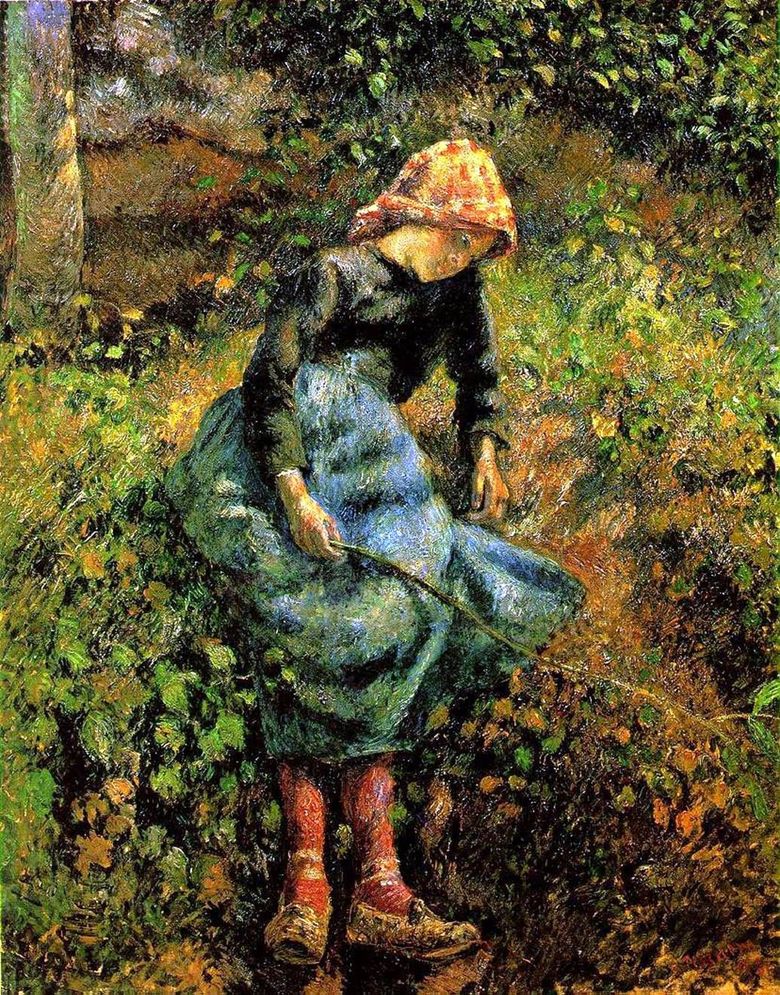
An active experimenter and a great enthusiast, Camille Pizarro was always on the lookout for new means of expression. With all of his creativity, he allegedly tried to prove that he belonged not to a traditional academic school, but to innovators-impressionists who could simply shake all traditional foundations with their ideas, revealing a new aesthetics of the beautiful. In many paintings one can notice a certain influence of one or another authoritative impressionist. Monet, Cezanne, Courbet, Millet and other artists have largely determined the style of Pissarro at one or another creative stage. “The Girl with the Rod” is a clear reference to Degas and Renoir.
Instead of the picturesque, richly filled landscapes, the master stops his attention on the image of human figures. Nature is gradually shifting from the main roles to the background, becoming only the background and giving way to man. The first thing that immediately stops the viewer’s eye, contemplating this canvas – the pose of the girl. This characteristic location of the body reminds us of Millet’s paintings, however, the latter usually idealized the characters of his works, while Pissarro wrote the girl very lively and simply.
The girl’s face expresses deep thoughtfulness, the bow of the head, the relaxed posture testify to peace and tranquility. The girl turns a twig in her hands, resting, enjoying solitude, indulging in her thoughts.
Extremely curious composition work. Pizarro consciously merges the main and secondary plans, while limiting to some extent the depth of the picture. The closeness of the figure and the perspective of the picture are, as it were, in the same plane, which can be considered a remarkable finding of the artist when building the compositional plan.
The painting “The Girl with the Rod” was another important milestone for the artist both in creative self-determination and in rethinking the creative achievements of the artists of the impressionists who are close to him in the spirit.
 Church of St. Jacques. Dieppe by Camille Pissarro
Church of St. Jacques. Dieppe by Camille Pissarro Cowgirl (Fille avec une tige) – Camille Pissarro
Cowgirl (Fille avec une tige) – Camille Pissarro Place de l’Europe in Paris by Camille Pissarro
Place de l’Europe in Paris by Camille Pissarro Island Lacroix in the fog. Ruan Fog Effect by Camille Pissarro
Island Lacroix in the fog. Ruan Fog Effect by Camille Pissarro Old road from Anneri to Pontoise. Frosts by Camille Pissarro
Old road from Anneri to Pontoise. Frosts by Camille Pissarro Entrance to the village of Voisin by Camille Pissarro
Entrance to the village of Voisin by Camille Pissarro Lacroix Island Rouen by Camille Pissarro
Lacroix Island Rouen by Camille Pissarro View from my window by Camille Pissarro
View from my window by Camille Pissarro